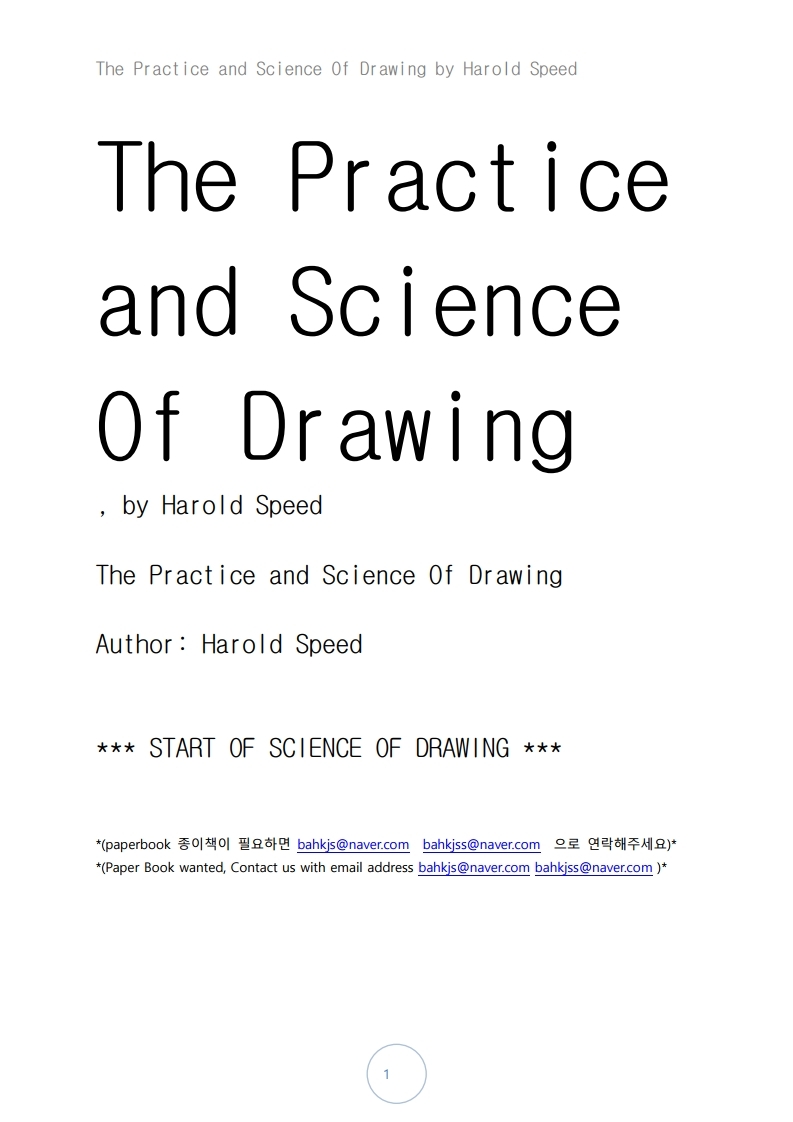예술/대중문화 > 디자인/도안
데생 도화의 실습과 기술.The Practice and Science Of Drawing by Harold Speed
PREFACE
Permit me in the first place to anticipate the disappointment of any student who
opens this book with the idea of finding "wrinkles" on how to draw faces, trees,
clouds, or what not, short cuts to excellence in drawing, or any of the tricks so
popular with the drawing masters of our grandmothers and still dearly loved by
a large number of people. No good can come of such methods, for there are
no short cuts to excellence. But help of a very practical kind it is the aim of the
following pages to give; although it may be necessary to make a greater call
upon the intelligence of the student than these Victorian methods attempted.
It was not until some time after having passed through the course of training in
two of our chief schools of art that the author got any idea of what drawing
really meant. What was taught was the faithful copying of a series of objects,
beginning with the simplest forms, such as cubes, cones, cylinders, &c. (an
excellent system to begin with at present in danger of some neglect), after
which more complicated objects in plaster of Paris were attempted, and finally
copies of the human head and figure posed in suspended animation and
supported by blocks, &c. In so far as this was accurately done, all this
mechanical training of eye and hand was excellent; but it was not enough. And
when with an eye trained to the closest mechanical viaccuracy the author
visited the galleries of the Continent and studied the drawings of the old
masters, it soon became apparent that either his or their ideas of drawing were
all wrong. Very few drawings could be found sufficiently "like the model" to
obtain the prize at either of the great schools he had attended. Luckily there
was just enough modesty left for him to realise that possibly they were in some
mysterious way right and his own training in some way lacking. And so he set
to work to try and climb the long uphill road that separates mechanically
accurate drawing from artistically accurate drawing.
Now this journey should have been commenced much earlier, and perhaps it
was due to his own stupidity that it was not; but it was with a vague idea of
saving some students from such wrong- headedness, and possibly
straightening out some of the path, that he accepted the invitation to write this
book.





